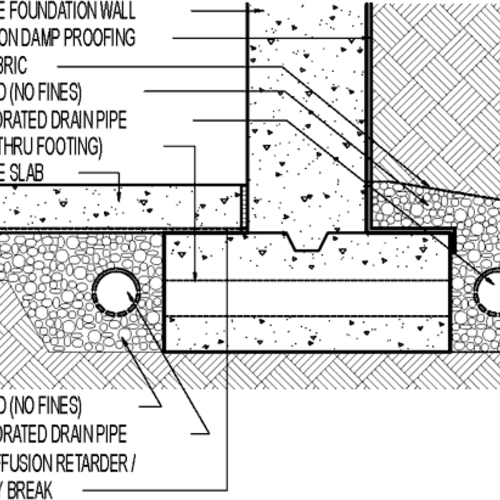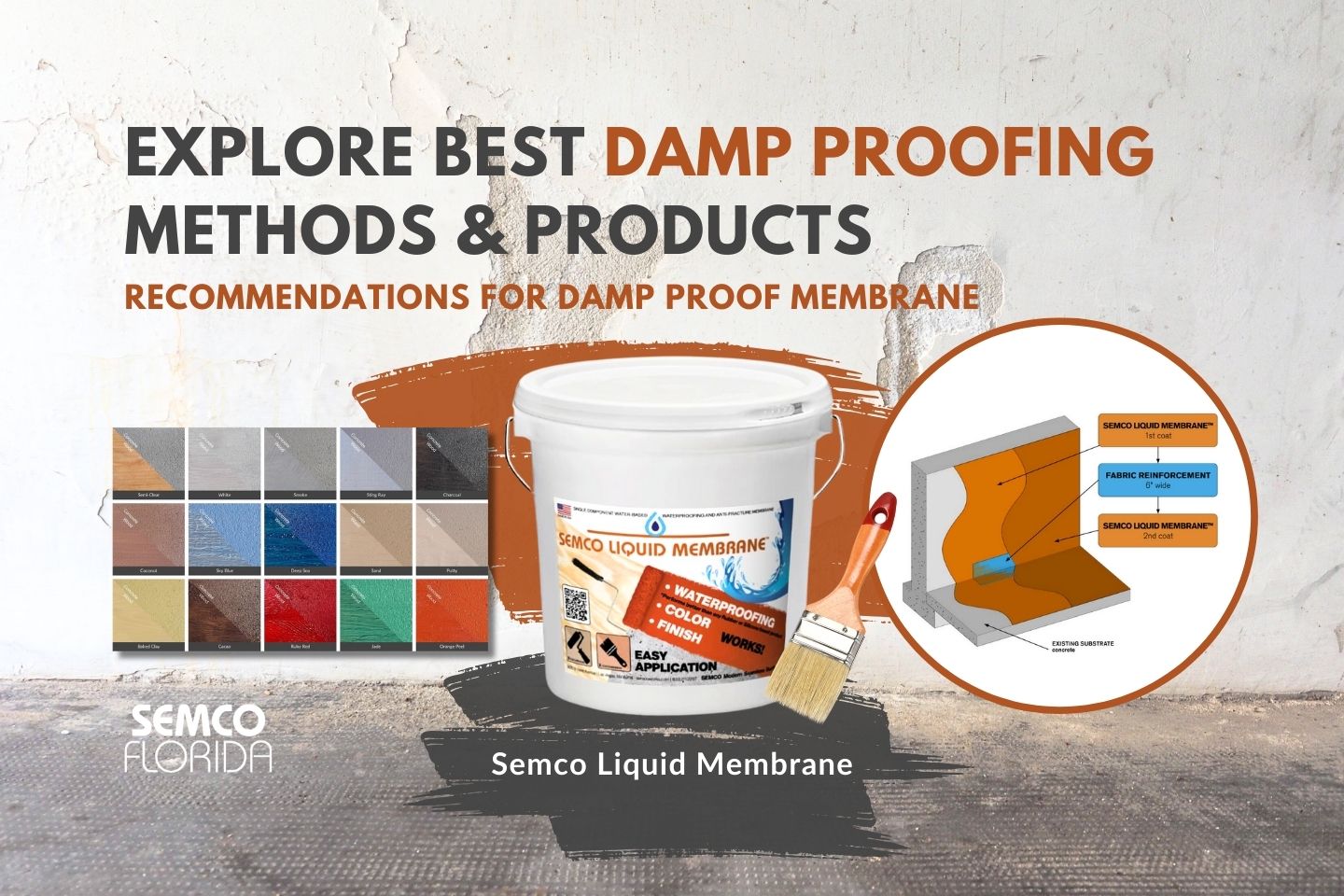Professional tips for damp specialist newcastle to maintain your building's integrity
Checking Out the Various Methods and Solutions for Effective Damp Proofing
Dampness in structures presents significant difficulties to both structural stability and indoor air top quality. Numerous techniques and solutions have emerged to battle this pervasive concern. From standard damp-proof membrane layers to ingenious chemical therapies, each technique offers one-of-a-kind benefits. Comprehending these alternatives is essential for efficient moisture control. Choosing the best solution depends on certain structure problems and needs, motivating additional exploration right into the most reliable moist proofing approaches readily available.
Understanding the Reasons of Wetness
Although moisture can develop from various resources, recognizing these causes is essential for reliable remediation. Generally, dampness originates from three key sources: rising moist, passing through moist, and condensation. Increasing damp occurs when groundwater travels up-wards with porous materials, such as block or rock, usually due to a lack of an effective barrier (damp removal newcastle). Penetrating damp is usually brought on by outside aspects, consisting of roofing system leaks, defective gutters, or damaged wall surfaces, permitting water to infiltrate a residential property. Condensation, on the other hand, results from excess moisture airborne, frequently aggravated by inadequate ventilation and temperature distinctions, resulting in water droplets developing on surfaces. Recognizing these underlying problems is crucial, as each sort of moisture needs a tailored strategy for removal. Proper analysis helps in figuring out the most efficient remedies, inevitably protecting the structural integrity of a structure and enhancing indoor air high quality
Typical Damp-Proof Membrane Layers

Chemical Damp-Proofing Solutions
Chemical damp-proofing options use an innovative method to protecting against wetness intrusion in structures. These methods normally entail the application of fluid chemicals that pass through masonry and create an obstacle versus increasing wet. Generally made use of chemicals consist of silanes, siloxanes, and various other water-repellent agents that react with surface area products to develop a hydrophobic layer.The application procedure normally needs drilling holes right into the wall surfaces, infusing the chemical option, and enabling it to treat. This technique is especially beneficial for older structures where traditional damp-proof membrane layers may be unwise. Chemical damp-proofing can be less turbulent and much more cost-effective than comprehensive renovation projects.While reliable, these services depend on correct application and environmental conditions for peak performance. damp removal newcastle. Routine upkeep and tracking are important to assure the longevity of the damp-proofing therapy. In general, chemical damp-proofing stands for a functional option for securing structures against moisture-related damages
Tooth Cavity Wall Surface Construction Methods
Dental caries wall surface construction methods provide countless advantages, particularly in wetness control and power effectiveness. By incorporating an air space in between 2 layers of masonry, these walls properly mitigate water ingress while improving insulation. This mix not just safeguards frameworks from wetness but also contributes to minimized energy consumption.
Advantages of Cavity Wall Surfaces
When taking into consideration effective moist proofing methods, the advantages of cavity wall surfaces stand out plainly. Dental caries wall surfaces include two different layers, creating an air gap that successfully reduces dampness penetration. This style reduces the risk of moisture, as the outer wall surface acts as an obstacle versus rain and water access. In addition, cavity wall surfaces boost thermal insulation, which contributes to power effectiveness by reducing warmth loss. They also give audio insulation, helping to develop a quieter indoor atmosphere. The air gap permits for ventilation, which aids in wetness control and minimizes the probability of mold development. These benefits not just enhance the overall convenience of a structure however also add to its longevity and structural integrity.
Dampness Control Approaches
Effective wetness control approaches are important in cavity wall surface construction to guarantee long-lasting security against moisture. One main approach entails the incorporation of weep holes, which promote water drainage from the tooth cavity, protecting against accumulation. Additionally, using breathable membranes can help handle moisture levels while allowing entraped vapor to get away. Proper positioning of insulation is likewise crucial, as it should not block drain paths. Additionally, ensuring that the outer fallen leaves of the cavity wall surface are built with water-resistant products improves total toughness. Regular upkeep checks are necessary to determine any obstructions or damages early, safeguarding the framework's stability. Inevitably, a mix of these methods forms a durable defense versus wetness invasion in dental caries walls.
Insulation and Power Efficiency
Insulation plays an essential function in enhancing power efficiency within cavity wall surface building. By incorporating protecting products, these walls develop a thermal barrier that decreases warmth loss and minimizes energy intake. Efficient insulation not just assists maintain a steady interior temperature level however additionally alleviates the threat of moisture, as it protects against condensation within the wall tooth cavity. Numerous techniques, such as using inflexible foam boards or mineral wool, can be employed to accomplish perfect insulation performance. Furthermore, correct installation is necessary to guarantee that gaps and voids are reduced, which can or else endanger power efficiency. Ultimately, a well-insulated tooth cavity wall surface contributes substantially to overall sustainability and lowers heating & cooling expenses for homeowners.
External Damp Proofing Methods
External moist proofing techniques are crucial for protecting structures from moisture infiltration. Two effective techniques include the application of water resistant membrane layers and the setup of French drains. These options assist reduce water build-up and maintain the honesty of structures.
Waterproof Membrane Application
While various methods exist for avoiding wetness access, the application of water-proof membrane layers continues to be an extremely efficient outside moist proofing method. These membranes are normally made from products such as polyethylene, rubber, or changed asphalt, supplying a robust barrier versus water penetration. The installment procedure includes applying the membrane layer to the outside surfaces of foundations or walls, ensuring full insurance coverage to avoid leaks. Proper attachment and securing at joints are vital to taking full advantage of effectiveness. Water-proof membranes can be used in various kinds, including fluid finishings and sheet membranes, enabling for flexibility based upon the specific needs of the structure. This other approach not only secures buildings from moisture but likewise boosts their longevity and architectural integrity.
French Drainpipe Installation
One reliable method for handling groundwater and preventing wetness buildup around a structure's structure is the installation of a French drain. This water drainage system contains a trench full of crushed rock and a perforated pipeline that reroutes surface water away from the structure. Correct installation needs mindful preparation, ensuring that the drainpipe inclines far from the framework to help with excellent water flow. Additionally, the place of the drainpipe is essential; it needs to be positioned in areas prone to merging or excess dampness. Routine maintenance, including cleaning particles from the crushed rock and making certain the pipeline remains unobstructed, is crucial for long-term effectiveness. Ultimately, a well-installed French drain can significantly minimize the danger of water-related problems in cellars and foundations.
Inside Waterproofing Strategies
Interior waterproofing strategies are vital for protecting a building's inside from dampness seepage and prospective water damage. These techniques generally involve the application of customized products and strategies created to produce a moisture obstacle within the framework. One common method is using water resistant coatings or sealers on wall surfaces and floorings, which stop wetness from penetrating surfaces.Additionally, mounting indoor water drainage systems, such as sump pumps, can effectively handle water buildup in cellars and crawl areas. Another method involves the usage of vapor barriers, which are installed to hinder moisture activity from the ground why not try here into living spaces.Moreover, dealing with any cracks or spaces in walls or structures with suitable sealers guarantees a comprehensive defense against water invasion. By implementing these indoor waterproofing strategies, homeowner can considerably reduce the risk of mold and mildew development, structural damages, and various other moisture-related problems. Correct execution of these methods is necessary for long-term security and structure integrity.
Routine Upkeep and Examination Practices
Regular maintenance and evaluation methods are vital for ensuring the long-lasting performance of damp proofing services in any kind of structure. Regular checks enable building owners to identify early indicators of dampness intrusion, such as peeling paint, mold growth, and stuffy smells. These indicators can signal underlying issues that need instant attention.Inspections must be carried out at the very least each year, concentrating on susceptible areas like basements, crawl areas, and exterior wall surfaces. During these assessments, building proprietors need to check out sealants, drainage systems, and air flow to validate they operate correctly.Additionally, keeping downspouts and gutters is important, as blocked systems can result in water accumulation near the foundation. Implementing a regular upkeep routine, together with timely repairs, can considerably expand the life-span of wet proofing measures and shield the architectural stability of the building. Proactive actions inevitably add to the overall health and safety of the living setting.
Often Asked Questions
How Much Time Does Damp Proofing Typically Last?
The period of damp proofing effectiveness varies, generally lasting in between 20 to 50 years. Variables such as application high quality, ecological conditions, and maintenance techniques substantially influence the durability of the moist proofing therapy.

Can I Damp Evidence My Home Myself?
The individual pondered the expediency of do it yourself damp proofing. With proper study and the best products, it is possible. Nonetheless, they also identified the significance of specialist support to guarantee durable effectiveness and protect against future issues.
What Are the Indicators of Ineffective Damp Proofing?
Indications of inadequate damp proofing include consistent mildewy odors, noticeable mold development, peeling off paint, wet patches on walls, and wood degeneration - mould treatment newcastle. Home owners should deal with these problems promptly to avoid additional damage and health and wellness worries
Does Damp Proofing Affect Indoor Air High Quality?

Just How Much Does Professional Damp Proofing Cost?
Professional damp proofing costs differ substantially, usually varying from $1,000 to $5,000 depending upon the home's dimension, the degree of the moist issue, and chosen approaches. Each scenario needs a tailored assessment for exact rates. Frequently, moisture originates from 3 main sources: rising wet, permeating moist, and condensation. When thinking about effective wet proofing techniques, the advantages of dental caries Continued wall surfaces stand out prominently. Exterior moist proofing methods are essential for safeguarding frameworks from wetness infiltration. While numerous techniques exist for avoiding moisture access, the application of water resistant membrane layers stays a highly effective exterior moist proofing strategy. Indications of inadequate moist proofing consist of consistent musty smells, noticeable mold and mildew growth, peeling off paint, damp spots on walls, and wood degeneration.